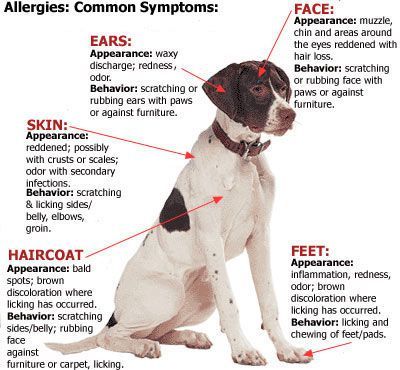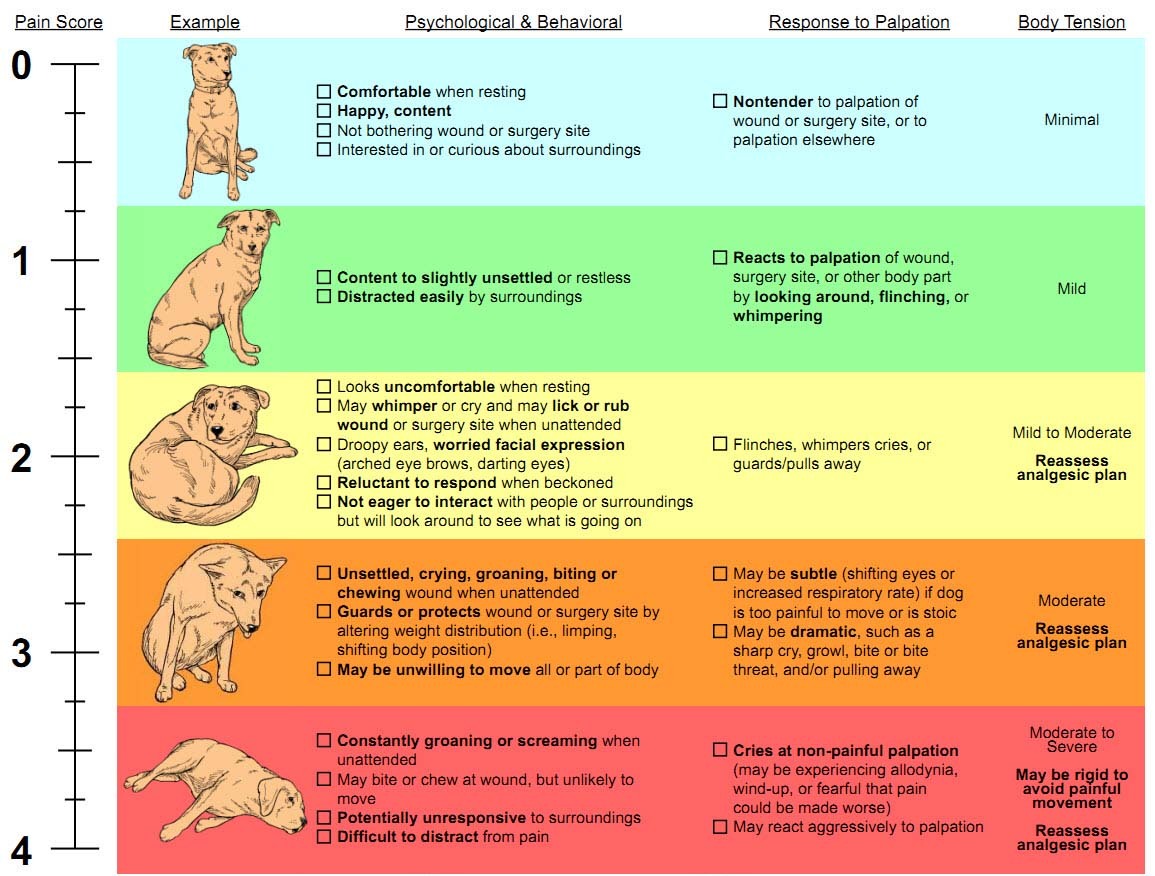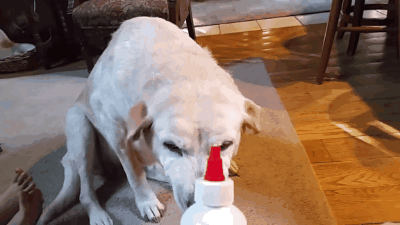The Ultimate Guide
Pain Management for Dogs


By Dana Brown, DVM - Sep 2, 2017
There are few things as frustrating
for a dog owner as knowing their dog is in pain and not being able to
do anything about it. That is why today, we are going to talk about pain
management for dogs and things you can do to help relieve your dog’s
discomfort.
Dogs are naturally reluctant to show pain. This makes it difficult for most pet owners to identify when their canines are hurting. If you pay attention to your dog’s body language, however, you can learn to identify subtle signs of pain, which makes it easier to manage, treat and prevent it in the future.
Remember that these signs may be indicative of, but are not exclusive to dogs experiencing pain.
We’ll take a look at the signs of pain in dogs, their clinical
assessment, common treatments and types of science-based pain management
for dogs, based on animal studies and partially on the research guide
provided by The National Academies of Sciences and Engineering (some studies can be found here).
Signs of Pain in Dogs
The most common signs of pain in dogs are:
- Excessive panting
- Pacing and restlessness
- Behavioral changes
- Physical signs of pain
- Constant whining and crying
- Tucking of the tail

“Without a knowledge of their
normal and abnormal behavior and appearance, assessment of pain in
animals is difficult, because animals are unable to communicate in ways
in which they can be readily understood by people.” (Hughes and Lang, 1983; Soma, 1987; source)
Panting is a common sign
of pain in dogs, particularly in senior dogs with arthritis. While all
dogs pant, it’s easy to notice when it reaches the point of “excessive.”
This type of panting cannot be relieved by cooling your dog or offering
water to your dog.
Pacing is a good indicator of pain, and you’ll see your dog pace back and forth when in pain. This is usually a result of not being able to get comfortable due to a health problem, injury or general experience of pain somewhere in the body.
Restlessness is also
common for dogs in pain to experience due to an inability to get
comfortable and in an effort to cope with their pain. You may notice
your dog shifting constantly or getting up and laying down repetitively.
Behavioral changes in
dogs can be indicative of pain as well. You may observe your dog
becoming less tolerant of being bothered, they might seek solitude
instead of company, or they may change their eating, drinking, and/or
bathroom behavior. Unfortunately, behavioral changes can be indicative
of many other things in addition to pain, so it’s important to talk to
your veterinarian as soon as possible.

Physical signs can be
also be observed in dogs experiencing pain. They could limp, may be
reluctant to put weight on a limb, have outward signs of injury, show
bruising, be bleeding, show changes in respiration or show other signs
of physical change. Physical changes in your dog should be evaluated by
your vet to find the cause of the pain and provide the necessary pain
management.
Vocalization is the
quickest giveaway (Lefebvre and Carli, 1985; Cooper and Vierck, 1986).
Dogs that are in serious pain will often cry or whine, particularly when
the source of their pain is stimulated or manipulated. Dogs will
generally avoid vocalization unless in serious distress. If your dog is
vocalizing their pain, seek veterinary help immediately. Note that
spontaneous barking is very rare; your dog is most likely to whimper and
howl instead.
Tucking of the tail between
their legs is another commonly seen sign in dogs who are in pain. This
should not be confused with dogs in a fearful or anxiety inducing situation who may take on a similar posture. Tail tucking is most commonly seen in dogs experiencing joint pain due to arthritis.

Mild pain:
Studies show that dogs in pain of mild severity are generally less
alert and become unusually quiet, with an unwillingness to move as
normal and appear to have stiff bodies.
Severe pain: It’s been observed that dogs experiencing serious pain will be the opposite to those with mild pain, and express many of the signs mentioned above. Shivering, lack of appetite and increased respiration are the most commonly observed signs in clinical research.
Now that you know what signs you should be looking for, we need to
discuss pain management for dogs and what you can do about it. There are
some canine pain management tips you can do yourself, but remember to
always check with your veterinarian for an underlying cause to the pain.
Another important thing to note is that dog owners must familiarize themselves with first aid for dogs
and all of its aspects. If you perform pain management for dogs on an
animal with an underlying injury, you could actually do more harm than
good. For example, massaging a pulled muscle could cause your pup a lot
of pain.

The Ultimate Guide on Pain Management
for Dogs
for Dogs
1 First Steps When Your Dog is in Pain
Once you’re aware of the signs of pain in dog, and you’re positive
that your pet may be experiencing some level of pain, there are a set of
steps for pain management for dogs that you need to take to
effectivelly help your canine deal with it.
Identify the source
Locate where your dog’s pain is coming from if you are able to do so.
For example, does your dog have a history of arthritis? Is he holding
one leg off the floor like you see in the photo above? Is he pawing at
one part of his body? Is his abdomen swollen or distended?
The source of your dog’s pain may not always be obvious. However, if
you are able to locate it, you can get a better idea of the proper pain
management for dogs techniques to use.
If you are unable to locate the source of your dog’s pain and no
physical symptoms offer more information, call your vet. If your vet is
closed, call the emergency vet. Unknown sources of pain can range from
mild illness to critical injury.
Pain where blood is present
Mild cuts and scrapes can be treated at home with antiseptic spray
and covered with a liquid bandage. This type of wound should not be too
painful, but if your dog continuously bothers the area take a closer
look.
Make sure there is no foreign object in the wound and that it is
healing well. If it is not healing or your dog seems to be in a lot of
pain, go to the vet for a second opinion.
To treat the pain related to more significant injuries, stem the
bleeding and have the wound treated by your vet. Once treated, your vet
will likely prescribe a prescription pain killer like Tramadol for dogs,
or a nonsteroidal anti-inflammatory like Meloxicam or Carprofen.
Pain related to puncture wounds
Puncture wounds should always be seen by a veterinarian. Depending on
the source of the puncture, your vet may administer an antivenin, or
clean the wound and prescribe antibiotics along with NSAID’s or
painkillers.
Pain related to an area hot to the touch
Heat is often a sign of infection. If your dog is already on
antibiotics for an existing infection, it’s likely the antibiotics are
not effectively treating the bacteria. Drop into your vet and let them
know that your dog may need an alternate antibiotic.
If your dog is not already on a course of antibiotics for an
infection, note any other symptoms and head to your vet. The only way to
treat pain related to infection is to reduce swelling with NSAID’s and
treat the infection with antibiotics.
You can reduce swelling while you wait for your vet appointment by using an ice pack. Never use heat on an infected injury.
Pain related to broken bones
Broken bones require immediate veterinary treatment. Your vet will
x-ray the injury, reset the bone and write a prescription for pain
management. Both NSAID’s and narcotic medications are used for pain
relief related to broken bones. Your vet may also prescribe antibiotics.
If your dog seems unsettled despite being on pain medication for a
broken bone and is not due for another dose, it is likely that they are
simply not used to their cast. You may also notice your dog acting out
of character due to their pain medication side effects.
Pain due to bloating
Bloating can be a sign of gastric torsion which requires immediate
veterinary intervention. If your dog has gas pains related to stomach
problems with no other signs of gastric torsion, various medications can
help.
Your vet can prescribe carminative to
reduce gas or recommend human alternatives in safe doses. Your vet may
also recommend feeding your dog more slowly, changing your dog’s diet,
eliminating dairy products, and not feeding your dog immediately after
exercise.
Pain due to limping
Limping can be the result of a simple strain or a more serious torn ligament or fracture.
- If your dog refuses to weight bear on their limb, pay your vet a visit immediately.
- If your dog is still weight bearing but limping, check the foot for injury. If no injury is noticeable, restrict exercise for a few days and ice any swelling. If limping continues for more than two days, seek veterinary assistance.
Pain due to arthritis
Dogs with a history of arthritis or older dogs who have not yet been
diagnosed with arthritis, often experience pain and stiffness. Dogs with
an existing diagnosis and prescription pain killers or
anti-inflammatories may require new medication or new dosing. Make an
appointment with your vet to adjust your dog’s treatment plan.
Older dogs who show signs of stiffness and pain in their joints should be assessed for arthritis. Depending on the severity of arthritis, treatment will vary.
- Early arthritis can be supplemented with glucosamine and chondroitin, fish oil, and regular low impact exercise.
- Medium severity arthritis can be treated as above along with pain killers and NSAID’s as needed.
- Severe arthritis can be treated the same way as medium severity arthritis with more regular use of pain killers and NSAID’s. These dogs also benefit from injectable medications like Adequan and exercise through hydrotherapy.

2 Using Heat for Pain Management in Dogs
Heat therapy is recommended for pain related to injuries older than
48 hours and is often one of the first solutions in pain management for
dogs performed by a vet in the clinic.
Heat can be used to relieve pain related to injury and arthritis.
When applied, heat increases blood flow to an injured area to promote
healing. Heat also helps to stop spasms of muscle tissue and decrease
stiffness.
Heat
can also loosen up muscles and joints prior to exercise. In some
instances, heat is also used to draw out infection from wounds, but it
should only be used under the supervision of a vet. Heat should not be
applied after exercise to muscle pain or to areas affected by
inflammation.
You can apply heat to your dog’s problem area by:
- Using a hot water bottle wrapped in a clean towel
- Applying a warm wet compress
- Bathing your dog in warm water
- Using a heating pad wrapped in a clean towel
Remember to never apply heat directly to your dog’s skin.
When applying heat, apply for 10 minutes at a time allowing at least
20 minutes rest between sessions. Always check periodically to make sure
your dog’s skin is not being burned.
3 When to Use Ice in Pain Management for Dogs
Ice therapy is recommended in pain management for dogs when the
source is inflammation. The cool contact dulls the pain associated with
tissues swelling. Ice therapy should not be used for muscle pain or on
sensitive painful areas.
You can apply ice to your dog’s problem area by:
- Using ice packs wrapped in a clean towel
- Applying a cool wet compress
- Using packaged frozen foods wrapped in a clean towel
Remember to never apply ice directly to your dog’s skin.
When applying ice as the first pain management for dogs solution,
apply for 10 minutes at a time allowing at least 20 minutes rest between
sessions. Check your dog’s skin periodically to ensure they have not
been burned or damaged by ice contact.

Pain meds for dogs are used frequently in veterinary medicine and
come in various classes. There has been a ton of research on which
pharmacologic and non-pharmacologic modalities work best for pain
management in dogs. A good start is the evidence-based 2015 AAHA/AAFP research.


NSAID’s
NSAID’s are the most popularly prescribed medications for pain and
inflammation in dogs. NSAID’s like Metacam, Rimadyl, Deramaxx, Previcox,
and Etodolac are the canine-safe equivalent of Ibuprofen. NSAID’s come with fewer side effects than other pain management treatments, but often cause stomach upset.
Opiates
Opiates are the heavy hitters when it comes to pain management for
dogs. These should be used sparingly and for short term treatment of
serious pain. Drugs like Morphine, Codeine, Buprenorphine, and Paregoric
are most often used for post-surgery pain.
Opiates are addictive medications. They are also very strong, come
with a range of side effects, and can cause damage to the body if taken
for too long.
Supplements or Nutraceuticals
Nutraceuticals and supplements like glucosamine chondroitin, Omega
Fatty Acids, and MSM can provide minimal or supplemental pain
management. This treatment is often combined with prescription
medication for management of chronic conditions like arthritis.
Steroids
Steroids like Prednisone, Corticosteroids, and Dexamethasone are used
to control inflammation that leads to pain. Steroids are not used as
often as they used to be because they suppress the immune system. This can lead to a number of chronic health conditions like Cushing’s Disease.
Antidepressants
When other medications prove ineffective or are not well tolerated,
antidepressants may be an option. Some antidepressants like Elavil,
Tofranil, or Prozac provide effective pain management.
Alternative Treatments
Overall,
studies have shown that pharmacological treatments are most effective
for pain management for dogs. However, alternative methods also exist
and those include holistic and herbal treatments. Massage, acupuncture,
thermotherapy, and laser therapy are all popular choices, but there’s no
evidence to their efficacy or safety.


If you’d rather go the alternative route, make sure to find a
licensed holistic or alternative veterinarian locally with good
reputation and reviews who can guide you through these less traditional
treatments.
Choose the Right Pain Management for Dogs Solution
Which pain management solution is right for your dog depends on the
cause of their pain, their current health, their age, your budget, and
co-existing health conditions. Make an appointment to talk with your vet
about the pain management for dogs that is available and which would be
best for your pet.

Be honest with your vet about your concerns as well as your financial situation if this is a potential roadblock to treatment.
- Signs of Pain in Dogs
- 1 First Steps When Your Dog is in Pain
- 2 Using Heat for Pain Management in Dogs
- 3 When to Use Ice in Pain Management for Dogs
- 4 What You Need to Know About Pain Management Medications
- Choose the Right Pain Management for Dogs Solution
https://topdogtips.com
READ NEXT: How To Give A Dog Massage and 3 Types of Dog Massage
 ALSO READ: 25 Most Serious Dog Health Symptoms That Cannot Be Ignored
ALSO READ: 25 Most Serious Dog Health Symptoms That Cannot Be Ignored

Like this? SUBSCRIBE for more actionable tips for dog owners!





1 comment:
Thanks for sharing.
I lost a dog once because of insufficient knowledge on these things and I don't want that to happen again.
On top of having even basic knowledge on this stuff, it can be really convenient having a nearby emergency animal hospital at your place.
Post a Comment